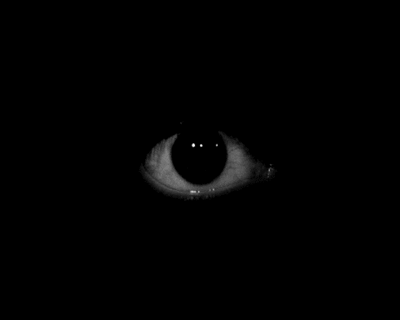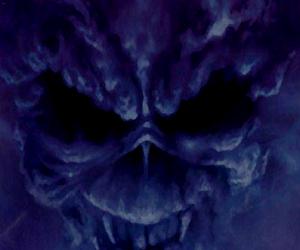Post by brillbilly on Nov 23, 2009 23:42:26 GMT 10
RCAF pilot Childerhose Canada 1956 UFO Photo over the Canadian Rockies near Ft. MacCleod, Alberta, Canada.
Story: Royal Canadian Air Force pilot R. J. Childerhose, while flying in a 4 plane formation at an altitude of about 11 km on 27-Aug-1956 7:20PM, saw and photographed a bright, sharply-defined disk, that was remaining stationary between the clouds. Analysis of case by Bruce Maccabee (PhD optical physicist).

From pilot's letter to Philip Klass:
"I had the object in good view for upwards of 45 seconds. It was stationary, with sharply defined edges. Looked like a shiny silver dollar sitting horizontal. The light emitted was much brighter than the existing sunlight and overexposed the film causing blurred edges in the picture... It neither moved nor changed shape while I had it in sight."
From pilot's letter to Dr. James McDonald:
"...the photo of the bright object doesn't represent quite what appeared to the naked eye. When I first saw the object it appeared as a very bright, clearly defined discoid, like a silver dollar lying on its side. The photo makes it look like a blob of light, the result of light intensity. It appeared much brighter than that (sic) of the sun which, of course, was setting behind the clouds up ahead. What appears in the Kodachrome slide is a disappointment, really." "It was in good view for some minutes because I looked at it trying to figure out what I was seeing and I called the attention of the formation to it before remembering that I had a camera in my leg pocket.".
It has been suggested by some UFO researchers that the glowing "halo" around UFOs -which is also why UFOs often appear as a "blob"/ball of light at night with changing neon-like colors white-blue-yellow-red and "wavy" / "blurred" / fuzzy in daylight (depending on angle of observation)- is due to UFOs in flight being surrounded by ionized air (aka "plasma sheath") somehow related to their flight mechanism. The absorption characteristics of this plasma sheath can also partly account for the daytime hazy or smoky appearance of the atmosphere around the UFO. When the surrounding illumination is brighter than the plasma, the plasma absorption may be greater than its emission, making it look darker or hazy. Read info on UFO illumination and performance (extract from book "Unconventional Flying Objects" by the late NASA aeronautical engineer Paul Hill) and section #9 in my UFO technical overview page.
Related: There are many photos of brightly luminous UFOs in flight appearing as "blobs of light", due to camera film saturation (over-exposure), e.g. USCG 1952 (more info below), Zurich Airport, San Jacinto 1988. Considering this, one can imagine why the vast majority of UFO reports are of strange "lights in the sky", distinguished by their erratic moves (zig-zagging).
Also, the World War II "foo fighters" more were luminous objects that would pace aircraft over battle-zones.
Story: Royal Canadian Air Force pilot R. J. Childerhose, while flying in a 4 plane formation at an altitude of about 11 km on 27-Aug-1956 7:20PM, saw and photographed a bright, sharply-defined disk, that was remaining stationary between the clouds. Analysis of case by Bruce Maccabee (PhD optical physicist).

From pilot's letter to Philip Klass:
"I had the object in good view for upwards of 45 seconds. It was stationary, with sharply defined edges. Looked like a shiny silver dollar sitting horizontal. The light emitted was much brighter than the existing sunlight and overexposed the film causing blurred edges in the picture... It neither moved nor changed shape while I had it in sight."
From pilot's letter to Dr. James McDonald:
"...the photo of the bright object doesn't represent quite what appeared to the naked eye. When I first saw the object it appeared as a very bright, clearly defined discoid, like a silver dollar lying on its side. The photo makes it look like a blob of light, the result of light intensity. It appeared much brighter than that (sic) of the sun which, of course, was setting behind the clouds up ahead. What appears in the Kodachrome slide is a disappointment, really." "It was in good view for some minutes because I looked at it trying to figure out what I was seeing and I called the attention of the formation to it before remembering that I had a camera in my leg pocket.".
It has been suggested by some UFO researchers that the glowing "halo" around UFOs -which is also why UFOs often appear as a "blob"/ball of light at night with changing neon-like colors white-blue-yellow-red and "wavy" / "blurred" / fuzzy in daylight (depending on angle of observation)- is due to UFOs in flight being surrounded by ionized air (aka "plasma sheath") somehow related to their flight mechanism. The absorption characteristics of this plasma sheath can also partly account for the daytime hazy or smoky appearance of the atmosphere around the UFO. When the surrounding illumination is brighter than the plasma, the plasma absorption may be greater than its emission, making it look darker or hazy. Read info on UFO illumination and performance (extract from book "Unconventional Flying Objects" by the late NASA aeronautical engineer Paul Hill) and section #9 in my UFO technical overview page.
Related: There are many photos of brightly luminous UFOs in flight appearing as "blobs of light", due to camera film saturation (over-exposure), e.g. USCG 1952 (more info below), Zurich Airport, San Jacinto 1988. Considering this, one can imagine why the vast majority of UFO reports are of strange "lights in the sky", distinguished by their erratic moves (zig-zagging).
Also, the World War II "foo fighters" more were luminous objects that would pace aircraft over battle-zones.











 Happy New Years Everybody!!!
Happy New Years Everybody!!!
